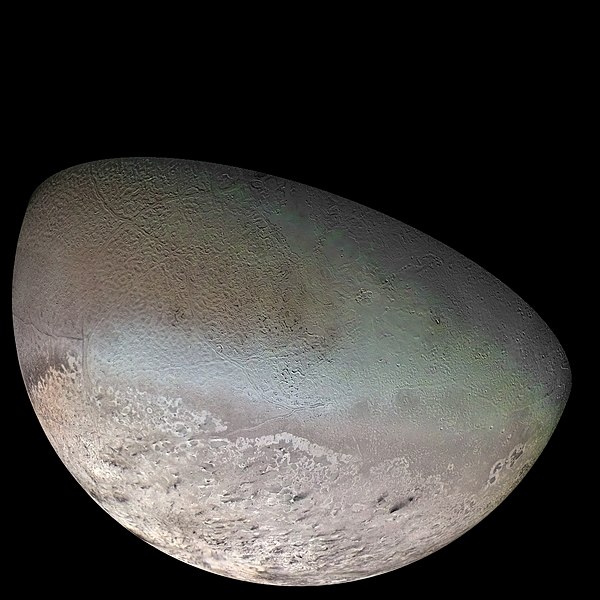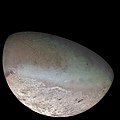Slika:Triton moon mosaic Voyager 2 (large).jpg

Velikost tega predogleda: 600 × 600 točk. Druge ločljivosti: 240 × 240 točk | 480 × 480 točk | 768 × 768 točk | 1.024 × 1.024 točk | 2.048 × 2.048 točk | 4.700 × 4.700 točk.
Izvorna datoteka (4.700 × 4.700 točk, velikost datoteke: 12,11 MB, MIME-vrsta: image/jpeg)
Zgodovina datoteke
Kliknite datum in čas za ogled datoteke, ki je bila takrat naložena.
| Datum in čas | Sličica | Velikost | Uporabnik | Komentar | |
|---|---|---|---|---|---|
| trenutno | 21:40, 10. oktober 2011 |  | 4.700 × 4.700 (12,11 MB) | Jbarta | Minimally compressed JPG from TIFF original at NASA. This image has already been colored by NASA. I think we have no business trying to "fix" the coloring. The only alteration made from the NASA original is to enlarge the canvas to enclose the complete sp |
| 23:00, 1. januar 2010 |  | 4.600 × 4.600 (2,81 MB) | Supportstorm | Image Adjustments: Auto levels on contrast and color | |
| 23:59, 18. februar 2008 |  | 4.600 × 4.600 (1,71 MB) | Kaldari | same image, better dimensions | |
| 06:59, 8. april 2005 |  | 4.500 × 3.500 (1,96 MB) | Bricktop | same image, higher resolution | |
| 19:13, 3. april 2005 |  | 1.024 × 796 (150 KB) | Smartech~commonswiki | A color mosaic of Triton, Neptune's moon (large). Taken by Voyager 2 in 1989. Color was synthesized by combining high-resolution images taken through orange, violet, and ultraviolet filters; these images were displayed as red, green, and blue images and |
Uporaba datoteke
Datoteka je del naslednjih 2 strani slovenske Wikipedije (strani drugih projektov niso navedene):
Globalna uporaba datoteke
To datoteko uporabljajo tudi naslednji vikiji:
- Uporaba na af.wikipedia.org
- Uporaba na an.wikipedia.org
- Uporaba na ar.wikipedia.org
- Uporaba na ary.wikipedia.org
- Uporaba na arz.wikipedia.org
- Uporaba na ast.wikipedia.org
- Uporaba na azb.wikipedia.org
- Uporaba na az.wikipedia.org
- Uporaba na ba.wikipedia.org
- Uporaba na be-tarask.wikipedia.org
- Uporaba na be.wikipedia.org
- Uporaba na bg.wikipedia.org
- Uporaba na bn.wikipedia.org
- Uporaba na bn.wikibooks.org
- Uporaba na bs.wikipedia.org
- Uporaba na ca.wikipedia.org
Oglejte si globalno uporabo te datoteke.


